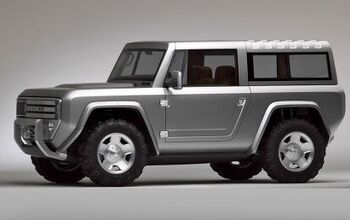Ford May Bring Ranger Back To US in 2018

Ford is reportedly discussing bringing back the mid-size Ford Ranger pickup to America and Canada in its bargaining negotiations with the United Auto Workers, the Detroit News is reporting.
Ford may be assembling the truck, which could be brought back as early as 2018, at its Wayne, Michigan plant. The truck would replace the outgoing C-Max and Focus at the plant. Ford announced production of those two products would move to Mexico in 2018.
The last U.S.-spec Ranger was most recently produced at Ford’s St. Paul, Minnesota plant, which shuttered in 2011.
According to sources, the formal decision would need to be ratified by Ford executives and the union’s board.
According to the report, Ford was enticed by the small, but growing, mid-size pickup segment. Although the segment only accounted for 227,000 sales in 2013, it is expected to grow in coming years. Toyota’s Tacoma dominates the segment, accounting for more than half of the segment’s sales, but General Motors’ Chevrolet Colorado/GMC Canyon could slowly gain a higher market share.
Ford produces the Ranger in Thailand, South Africa and Argentina for 180 global markets including Mexico. Recently, Ford announced it would produce the Ranger in Nigeria.
It’s unlikely that Ford would would bring the global Ranger to America without significant modifications for safety and fuel economy. The Ranger’s size and classification places it firmly in the CAFE “dead zone,” which could make it difficult for Ford to find a suitable (read: efficient) powertrain.
The Ranger was last redesigned in 2011 and facelifted in 2015. A redesign for the Ranger would align with the 2018 production start date in Wayne. The C-Max and Focus are scheduled to leave that plant in 2018 as well.

More by Aaron Cole
Latest Car Reviews
Read moreLatest Product Reviews
Read moreRecent Comments
- Analoggrotto I don't see a red car here, how blazing stupid are you people?
- Redapple2 Love the wheels
- Redapple2 Good luck to them. They used to make great cars. 510. 240Z, Sentra SE-R. Maxima. Frontier.
- Joe65688619 Under Ghosn they went through the same short-term bottom-line thinking that GM did in the 80s/90s, and they have not recovered say, to their heyday in the 50s and 60s in terms of market share and innovation. Poor design decisions (a CVT in their front-wheel drive "4-Door Sports Car", model overlap in a poorly performing segment (they never needed the Altima AND the Maxima...what they needed was one vehicle with different drivetrain, including hybrid, to compete with the Accord/Camry, and decontenting their vehicles: My 2012 QX56 (I know, not a Nissan, but the same holds for the Armada) had power rear windows in the cargo area that could vent, a glass hatch on the back door that could be opened separate from the whole liftgate (in such a tall vehicle, kinda essential if you have it in a garage and want to load the trunk without having to open the garage door to make room for the lift gate), a nice driver's side folding armrest, and a few other quality-of-life details absent from my 2018 QX80. In a competitive market this attention to detai is can be the differentiator that sell cars. Now they are caught in the middle of the market, competing more with Hyundai and Kia and selling discounted vehicles near the same price points, but losing money on them. They invested also invested a lot in niche platforms. The Leaf was one of the first full EVs, but never really evolved. They misjudged the market - luxury EVs are selling, small budget models not so much. Variable compression engines offering little in terms of real-world power or tech, let a lot of complexity that is leading to higher failure rates. Aside from the Z and GT-R (low volume models), not much forced induction (whether your a fan or not, look at what Honda did with the CR-V and Acura RDX - same chassis, slap a turbo on it, make it nicer inside, and now you can sell it as a semi-premium brand with higher markup). That said, I do believe they retain the technical and engineering capability to do far better. About time management realized they need to make smarter investments and understand their markets better.
- Kwik_Shift_Pro4X Off-road fluff on vehicles that should not be off road needs to die.


































Comments
Join the conversation
Too big and too late (for me at least).
Agree with APaGttH, the only fullsize I would consider is a Titan Kingcab Pro-4x. Its a tidy older design with a low bed rail height, at least in appearance. Some of these new trucks look like aircraft carriers when they roll by, GM being the worst.